|
Music therapy has long been recognized as a way to help patients heal from trauma. Music-focused therapy offers multiple benefits: it can foster positive social relationships, reduce feelings of anxiety, modulate the intensity of emotionally fraught memories, and bring about emotional catharsis as patients work through painful events. Music therapists have assisted people who have experienced some of the most terrifying natural disasters and terror attacks in recent history. For instance, therapists have brought the healing powers of music to survivors of 9/11, Hurricane Katrina in 2005, mass shootings, and war and conflict zones around the world. A tested healing profession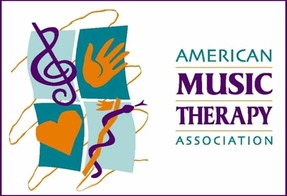 The American Music Therapy Association (AMTA) offers a concise definition of its field: Music therapy is anchored in clinically verified and evidence-based practices designed to help patients achieve their therapeutic goals in collaboration with professionals credentialed through an approved music therapy program. A professional qualified in music therapy can assist clients in a variety of settings, including private practice, public hospitals, mental health clinics, substance abuse treatment facilities, and more. A century-old treatment for trauma Music therapy as a means of healing after trauma first gained currency in the United States after American physicians began treating soldiers who developed post-traumatic stress disorder (PTSD) during service in the First World War. Today, music therapy and its practitioners are part of a well-established medical and psychiatric tradition. Building multiple types of resilienceMusic therapy is not a “cure” for the aftermath of trauma, but it can help patients of all ages strengthen their understanding of their emotions and acquire positive skills for coping with long-term symptoms. The AMTA’s principal findings on the efficacy of music therapy note that it can be effective in strengthening patients’ ability to function successfully in terms of their emotions, reasoning capacity, relationships, and overall behavior. When successfully practiced, music therapy can also ease muscle tension, and it can be conducive to promoting greater relaxation and increased openness in interpersonal relationships. Going where words cannot For people who have experienced trauma, music can provide a deeply important means of communicating what they urgently need to express—without words. Music therapists often point out that their patients need to be reassured that the often-overpowering emotions they may feel in response to trauma are normal and valid. Patients also sometimes need “permission” to explore what are often threatening or negative emotions surrounding the events of their trauma, in a safe environment. Music therapy has shown the ability to provide a wordless way for patients to express fraught or uncomfortable emotions about traumatic experiences. The non-invasive, non-judgmental aspect of music therapy is particularly important to note here. Patients can pour their feelings into listening to or performing highly expressive, artistic creations without fear of the negative reactions or judgments of others. While talk therapies are often very helpful to patients, experts point out that music therapy offers the advantage of providing clients with a quick resource for tapping into previously ignored or threatening feelings and memories. In certain instances, music therapy has even been shown to lead to shorter inpatient stays and a better fulfillment of clients' larger goals for treatment. Increasing confidence and control Music therapy can also help patients to feel more in control of their own emotions and can give their self-confidence and feeling of personal empowerment a much-needed boost. For people who have undergone traumatic experiences, this is especially needed. Many people who have been traumatized feel confused, bewildered, and powerless. They may feel as though life has become chaotic and that nothing—and no one—can be trusted. Healing relationshipsIn addition, music therapy can assist people in reconnecting with their loved ones in positive ways, reestablishing bonds of intimacy that may have been strained or broken under the strain of the trauma. Easing stressStress reduction is perhaps one of the most meaningful and most studied benefits of music therapy. According to the American Psychological Association, a study of pre-term babies in a neonatal intensive care unit suggested that lullabies may have the power to soothe infants and their parents, who find themselves in the midst of a bewildering array of medically necessary, but intrusive and noisy machinery. The researchers in this 2013 study also surmised that the soothing music might have the ability to regulate the babies’ sleep habits.
Interestingly, of all the methods of delivering the music to the babies, singing was the most effective at slowing their heart rates and lengthening the amount of time they remained in a state of calm alertness. According to the study’s lead author, live music in particular shows the most potential to appropriately stimulate and activate the human body, elevate a patient’s quality of life, and promote recovery. Teaching children to sing and play their country's national anthem—and those of other nations—can be a fun, effective musical lesson. National anthems can also serve as an effective means of connection between the arts and studies in geography and culture, at a time when educators are realizing the value of helping students build bridges between subjects. Enriching the music curriculum through cultural geographyIn units on patriotic songs, teachers have come up with rich curricula on the US national anthem, “The Star-Spangled Banner,” and many other national anthems. Information on some of these is available through the National Association for Music Education (NAfME). The organization offers links to repositories of vocal and instrumental performances of these anthems, as well as sheet music and background summaries on hundreds of current and historic anthems. In addition, several publishers offer engaging books for children explaining the origins and importance of national anthems. Also widely available are books for all ages containing sheet music of the world’s anthems. The book National Anthems from Around the World, prepared by well-known music publisher Hal Leonard, LLC, is just one example. Thanks to the internet, recordings of these anthems in their original languages are only a few clicks away. Several versions are accessible on YouTube and Spotify. Public libraries are another rich—and free—source for streaming versions of the world’s national anthems. Music is a truly universal language. On the other hand, a country’s national anthem presents its people’s viewpoint on their history and their hopes for the future. Let's take a look at a few contemporary national anthems and learn how the stories they tell demonstrate both the diversity and common experiences of the world’s peoples. A poignant reflection on warWhile it's notoriously difficult to sing well, “The Star-Spangled Banner” had become a time-tested American institution even before it became the country’s official anthem in 1931. President Herbert Hoover signed the congressional resolution declaring the song’s historic status on March 3 of that year. Francis Scott Key famously wrote the words as a poem on September 14, 1814. Key drew inspiration from his sighting of a single American flag still flying over Fort McHenry in Maryland as the fort sustained British bombardment during the War of 1812. Key was an eyewitness to the attack, as he waited on board a ship only a few miles away with the friend he had just helped release from British captivity. Key titled his poem the “Defence of Fort McHenry.” Years later, others set his words to the tune of the English drinking song “To Anacreon in Heaven,” composed by John Stafford Smith. A royal and national hymn that went around the worldThe country from which the United States gained its independence has its own time-honored anthem in “God Save the Queen” (sung as “God Save the King” during the reign of a male monarch). This anthem is also often used throughout the British Commonwealth. The song’s origins are obscure. The Oxford Companion to Music lists several early variants. Some authorities credit Henry Purcell or any of several other 17th century composers. Many music historians cite composer and keyboardist John Bull, who died in 1628, as the song’s likely author. Others point to a passage in an old Scottish carol as remarkably similar to the current version of the anthem. In any case, the earliest known printing of the unattributed lyrics to “God Save the Queen” appeared in 1745. The song soon appeared on the English stage and found its way into the work of composers George Frideric Handel and Ludwig van Beethoven. American composer Samuel F. Smith borrowed the tune for “My Country, ‘Tis of Thee,” which appeared in 1832 and has become an unofficial second national anthem for the US. A paean to the “True North”Canada’s national anthem, “O Canada,” was first publicly performed in 1880. Its title in the original French, as written by Sir Adolphe-Basile Routhier to music by Calixa Lavallée, was “Chant national.” A special government committee approved the song as the country’s national anthem in 1967, and it was officially adopted in 1980. The song’s lyrics celebrate the beauty and strength of this country of the “True North,” and express the hope that, through the help of God and “patriots,” it will remain “glorious and free.” Born in revolutionFrance’s national anthem, the marching song “La Marseillaise,” literally calls citizens to arms in defense of freedom in the fight against tyranny. Amateur composer Claude-Joseph Rouget de Lisle came up with the song overnight in 1792, at the height of the revolution that overthrew the French monarchy. The song’s current popular name arose after troops from the port city of Marseille adopted it as a particular favorite. The beauty of the landSome national anthems focus less on military or sovereign power and more on the natural beauties of the lands they represent. Australia’s national anthem, “Advance Australia Fair,” exalts its people’s home “girt by sea,” with its “beauty rich and rare.” Similarly, the Czech Republic’s national anthem’s title translates literally as “Where Is My Home?” The song’s simple, meditative music and lyrics convey the loveliness of the country’s landscape of pine trees, mountain crags, and flowing streams. A symbol of national reconciliationOther countries’ national anthems focus on their diversity and hard-won unity. South Africa’s national anthem, “Nkosi Sikelel’ iAfrika” is based on a 19th century hymn originally written in Xhosa that later became the anthem of the African National Congress. In the early 1990s, during the dismantling of apartheid, the country declared two national anthems: “Nkosi” and the Afrikaans apartheid-era anthem “Die Stern van Suid-Afrika” (“The Call of South Africa.”)
When the country won the 1995 Rugby World Cup, both songs were sung together. Today, South Africa's national anthem combines shorter versions of both songs into a single national hymn, with lyrics in five languages: Xhosa, Zulu, Sesotho, Afrikaans, and English. When students of any age are learning about music, they will find their studies enriched by learning about the history of different musical forms. The following survey of medieval Western music can serve as one doorway into this topic for young musicians, as well as for adult learners interested in the musical history of Europe. Defining an era beyond the stereotypesThe stereotypical view of anything “medieval” conjures up images of dank, fusty monasteries, brutal warfare, and stagnation in the arts and sciences. However, this is far from the truth. The Middle Ages in Western Europe were years of great creativity in the arts, sciences, and exploration. Authorities differ on which time span precisely defines the Middle Ages. The most generous reckoning begins the period at the fall of the Roman Empire in the late fifth century and ends it in the late 15th century AD. A world centered on prayerThe medieval period was characterized by the central place of liturgical music as both high art and a daily companion for the nobility and common people alike. The practice of singing psalms and setting prayer to music dates back much earlier than the Middle Ages, into the beginnings of human history. While much of this ancient religious music was performed a cappella, instruments often lent their voices to the mix, enhancing the sound. The medieval Christian church took many of its cues from ancient Jewish sacred music, in forbidding the participation of women’s voices after the late sixth century AD and limiting or curtailing instrumentation. In the church, mass was the chief occasion for the performance of this music, sung by priest, congregation, and choir. The choir typically filled an “answering” function, responding to the themes of the main part sung by the priest. The human voice as instrumentThe long tradition of prayer through song reached a pinnacle in the development of Gregorian chant, a variety of plainchant, during the ninth century AD. Gregorian chant is still often used today in Catholic ritual. This style of plainchant puts the religious text at the heart of the composition. The human voice is the only instrument used. The music of Gregorian chant is described as monophonic—it consists of one melody, sung in unison. The chant serves to frame the words of the prayers, rather than to overpower them. The majority of Gregorian chants originate in the Latin Vulgate, the version of the Bible in widespread use in medieval Europe. Although most Catholic congregations today celebrate mass in the community's vernacular language, traditional Gregorian chant holds an honored place, both esthetically and liturgically, in modern Catholic culture. Its popularity with both religious and secular audiences is attested by the many recordings now available. Hildegard von Bingen – a composer of mystic devotionHildegard von Bingen, later Saint Hildegard, was born in Germany at the close of the 11th century and died near the end of the 12th. This abbess, mystic, and prophetic visionary is considered one of the first and most talented female composers. Her monophonic works are characterized by soaring lyricism and a deeply felt spirituality. St. Hildegard set dozens of her own poems to music, assembling them into a collection entitled Symphonia armonie celestium revelationum. She was also a scholar who wrote widely on science and medicine and traveled as an itinerant preacher. Numerous musical ensembles have produced recordings of St. Hildegard’s surviving compositions in recent years, and contemporary audiences continue to find them musically and spiritually rewarding. Contemporary collections of her music have titles that reflect her mysticism: Canticle of Ecstasy, Music for Paradise, and A Feather on the Breath of God are only a few examples. Moniot d’Arras – exemplar of the trouvère estheticOne enduring tradition that flourished particularly in the later Middle Ages was that of the secular romantic balladeers and traveling entertainers known as troubadours and trouvères. Lutes, citterns, and other stringed instruments frequently accompanied these musicians' compositions, although their vocals often stood alone. The city of Arras, France, in northern France was noted as a center of the delicate and refined trouvère style. The trouvères’ style evolved roughly in tandem with that of the troubadours, although the trouvères typically composed lyrics in their northern French dialect, and the troubadours drew from the vernacular native to southern France, the langue d’Oc. One monk, Moniot d’Arras, earned widespread recognition as a composer in the early 13th century. While much of his output was focused on liturgy, many other pieces extol the culture of chivalry and courtly love between a nobleman and his lady. These were often the main subjects of troubadour and trouvère compositions. The sacred and the secularThe traditions of the troubadours and trouvères were part of the larger growth of non-sacred medieval music from about the 13th century onward. The ballade, the rondeau, and the virelai were the three leading types of secular compositions in France at this time. Guillaume de Machaut – lyricist supremeGuillaume de Machaut, considered today one of the towering figures of medieval European music, was born at the beginning of the 14th century and is thought to have lived well into his 70s. He wrote in both French and Latin.
Machaut composed one of the first polyphonic treatments of the mass, a development moving away from the monophonic plainchants. Polyphonic music features two or more independent melodies. Machaut's dozens of motets demonstrate the full flowering of this type of music. In 1337, Machaut became the canon of the cathedral at Reims. He wrote poems and musical compositions, with experts today viewing him as a master lyricist and versifier working in the then-current Ars Nova (polyphonic) style. Machaut also used and reworked the courtly love theme, creating beautifully constructed poems that blend technical virtuosity with lyricism. A large number of researchers believe that, for people of any age, listening to music while performing tasks at home, work, and school can have a beneficial effect on learning, productivity, and satisfaction. Here are a few facts about this effect: 1. Music improves productivity when working on repetitive tasks. One team at the University of Birmingham in the United Kingdom found that playing background music while engaging in repetitive tasks—think spreadsheets, counting objects, and reading email—not only makes time go by more pleasantly, it serves to boost productivity. The authors of the study note that this held true for their test subjects even when they were in the midst of a considerable amount of ambient industrial noise. 2. Music is most effective when it is considered pleasant or neutral by the listener.A University of Miami music therapy professor discovered that when people hear music that they personally find enjoyable, they tend to start feeling better. Her test subjects—people who worked in information technology—reported finishing their assignments more quickly when listening to music they liked. Additionally, she discovered that the elevation in mood her subjects experienced propelled them on to come up with better ideas and insights related to their tasks. She concluded that personal choice regarding musical selections is extremely important to the effectiveness of that music in heightening mood and productivity. She went on to observe that over-stressed individuals tend to come to over-hasty conclusions about work tasks. On the other hand, individuals who were able to select their own music could see multiple possible solutions to a problem. Some investigators have discovered, however, that music we neither strongly like, nor strongly dislike, may be best for workplace productivity. A group of Taiwanese researchers at Fu Jen Catholic University found that extreme reactions—positive and negative—to music made it more difficult to maintain concentration. 3. Music triggers the release of dopamine in the brain.Biology tells us that the act of listening to music we enjoy releases hormones called dopamine into the brain’s reward center. This is the same reaction we experience when we look at a beautiful scene, drink in the scent of a rose, or eat a delicious meal. One physician at the Mayo Clinic who has studied the way people at work gain focus from listening to music notes that it takes less than an hour a day to achieve the mood-lifting and mind-opening benefits. 4. Music is most effective at increasing productivity when it is instrumental. One point seems to be consistent across a variety of research studies: the best music for concentration and productivity is wordless. Words that we can understand tend to distract the brain, since they pull us in the direction of trying to make sense of them. One study found that almost half of office employees in the test group were distracted by human speech. Trying to tune out the background noise of others’ voices won’t work if the music has lyrics. It will merely cause the brain to shift its focus. 5. The tempo of Baroque music may facilitate concentration and learning.The tempo of a piece of music has a strong impact on how well it facilitates concentration. Numerous studies have shown that music from the Baroque period in particular—think Bach, Vivaldi, Georg Telemann, Henry Purcell, and Jean-Philippe Rameau—aids learning and concentration, which contributes to longer-term retention of new information. In fact, authors Sheila Ostrander and Lynn Schroeder wrote the book Superlearning 2000, an update to their earlier title Superlearning, to further outline exactly how to use the steady, even beats of Baroque music to learn foreign languages, new vocabulary, and a host of other facts, figures, and real-world skills. Fans of the Super-Learning books say that the techniques and helpful resources the authors offer have helped them speed up their learning, recall much more of what they have read, and fully engage both hemispheres of their brains. Ostrander and Schroeder, who began putting the book together in the 1970s, drew on then-revolutionary research by top psychologists and neurologists. These scientists had discovered that listening to Baroque music in particular was capable of increasing the powers of a person’s concentration and memory. They posited that this was the result of the regular mathematical formulas that lie at the heart of the Baroque tempo. 6. Baroque music may facilitate the production of alpha waves in the brain.The 50- to 80-beat-per-minute tempo of Baroque, researchers have learned, is comparable to an adult’s resting heart rate. This makes it ideal for stimulating the production of alpha waves in the brain. These alpha waves are known for inducing a mood of deep but focused relaxation.
When human beings are in an alpha state—with their brain waves’ frequency measuring from 9 to 14 hertz, or cycles per second—they are far from being passive or inattentive. A person in an alpha state is calm but alert, and is extremely receptive to taking in and processing new information. Most of our daily lives are spent in the active beta state, with brain waves of between 15 and 40 cycles per second. This means the alpha state represents a significant reduction in our normal rhythms, giving us more time and space to notice things we may not have noticed before. Whether tone poems are enjoyed in a concert hall or played in a simplified arrangement in school or at home, they offer young music students a rich variety of musical experiences. A tone poem is a musical composition designed for a full orchestra. It is designed to evoke, through the choice of instrumentation, tempo, and arrangement, concrete images and storylines in the minds and hearts of listeners. The titles of many tone poems further help the listener in that they acknowledge a composition’s roots in a famous legend, poem, picture, place, or historical event. A tone poem can conjure up visions of majestic mountains, forests, and waterways; knights on horseback gliding over desert sands; the appearance of magical beings, or the tender feelings between two lovers. And a favorite tone poem can make audiences feel transported, mentally and emotionally, to long-past heroic ages, or into the pages of beloved works of literature. Hungarian composer Franz Liszt is often credited with inventing the form of the tone poem, also known as the symphonic poem, in the mid-19th century. In this era of romanticism, revolution, and rising national consciousness, the form flourished. By the early 20th century, composers such as Igor Stravinsky were still writing richly orchestrated tone poems. However, the form began to shift toward using this type of colorful music as a background for dance performances, rather than as single-unit orchestral pieces. Here are brief summaries of what makes only a few of the best-known tone poems memorable: 1. The MoldauCzech composer Bedřich Smetana completed “The Moldau” after only 19 days of work in 1874. Since then, its central melody has become an iconic national symbol. The piece is one part of a six-section suite titled My Country, in which the deeply patriotic composer depicted the natural beauty and the rich cycle of history and myth of his native land. “Moldau” is the German name for the Vltava River, which flows from high forested mountains through the country lowlands and straight through the center of Prague. Smetana’s piece is by turns mystical, forceful, lively, and majestic, as it conjures up, first, the river’s quiet patter, then its sweep through a folksong-filled plain, to its destination near the capital, the royal seat of the Bohemian kings. 2. ScheherazadeRussian composer Nikolai Rimsky-Korsakov debuted his orchestral suite Scheherazade in 1888, offering audiences a collection of musical trips to the stories of the Arabian Nights. The deep, bold opening notes paint a powerful picture of Sultan Shahryar, and the sinuous lilt of the violin portrays his wife, the storyteller Scheherazade, with the later musical themes unfolding the stories she tells like the unrolling of a magic carpet. The four movements of the suite tell the story of Sinbad and his ship on the ocean; the “Tale of the Kalendar Prince,” bringing out the full capacity of the woodwinds to evoke an air of mystery; the tender and richly soulful romance of the story of a young prince and princess; and a finale that brings in themes from each of the previous sections, culminating in vivid images of a festival and the destruction of a ship on a wild, tempestuous sea. 3. FinlandiaIn 1899, Finnish composer Jean Sibelius composed and premiered his now world-famous tone poem “Finlandia” as part of a larger suite. Like Smetana, Sibelius was a patriot who used his music to challenge the rule of an empire over his small country. “Finlandia” was, in fact, originally written to be performed at an event protesting the Russian tsar’s censorship of the Finnish press. The work begins with the boom of timpani and brass to establish a somber and foreboding setting. As woodwinds and strings enter the musical conversation, they help to weave the type of stately atmosphere found in a king’s great hall. After a burst of forceful sound bringing in the sense of the whirlwind of struggle animating the Finnish people, the mood lifts. The piece concludes on drawn-out notes evoking a deep sense of serenity and majesty, as if listeners were looking down on sweeping vistas of dark-green Finnish forests. Soon after its composition, the central theme of “Finlandia” became popular worldwide, with many American communities using the melody for songs honoring cities, schools, and other organizations. 4. Fantasia Walt Disney’s 1940 full-length orchestral cartoon movie masterpiece Fantasia is a contemporary tone poem in itself. The film incorporates Disney’s retellings and re-imaginings of the stories behind several of the best-known symphonic works, including French composer Paul Dukas’ The Sorcerer’s Apprentice. In Disney’s version, Mickey Mouse is the hapless student of magic pursued by a pack of enchanted brooms.
Dukas’ original soundtrack debuted in 1897. He based it on a folkloric tale by Johann Wolfgang von Goethe, one of the towering figures in the European literature of the Enlightenment. Dukas’ composition closely follows the sequence and spirit of Goethe’s piece by offering an opening that paints a picture of quiet, but magic-filled domesticity in the sorcerer’s workshop. But then the apprentice enters, represented by a leitmotif uniting oboe, flute, clarinet, and harp. A burst of timpani perhaps signals a stroke of enchantment. Then, through the composer’s use of a triple-time march, the sorcerer’s army of brooms comes lumbering, and then sprinting, to vivid life, carrying one bucket of water after another. Dukas masterfully uses strings to conjure up the flooding cascade of water that ensues before the sorcerer, accompanied by the gloomy moans of the bassoon, returns to chase away all the mischief. A movie musical night can be one of the most enjoyable ways for families who love music to spend time together. Particularly when a child in the house takes voice or movement lessons, or plays an instrument, musicals can open up new doors for musical understanding and creativity. Whether you rent, buy, or stream them, these old-fashioned classic musicals offer great lyrics and danceable tunes, as well as engaging storylines that are suitable for all ages. 1. The Sound of MusicRichard Rodgers’ and Oscar Hammerstein II’s The Sound of Music (1965), starring Julie Andrews and Christopher Plummer, will likely top the list of favorite movie musicals for many families. One of the most recognizable and beloved of the great movie musicals, it tells the story of Maria, a young novitiate in a convent who starts work as a governess for a widower and his large family, only to fall in love. Set in Austria at the time of the Nazi invasion that led into World War II, the plot offers a clear contrast between good and evil as the von Trapps struggle to remain true to their values and stage a perilous escape. The musical is based on the real-life experiences of Maria von Trapp, as told in her 1949 book The Story of the Trapp Family Singers. The many well-known songs from the musical include “Do-Re-Mi,” (“Do, a deer, a female deer…”). In addition to being one of the liveliest and easiest musical numbers for a young child to learn, the song is a great way to teach solfege, the art of training the ear to distinguish musical tones. Other wonderful pieces on the soundtrack include the poignant coming-of-age love song “Sixteen Going on Seventeen,” the raucously funny “The Lonely Goatherd,” and the poignant “Edelweiss,” a folk song that the von Trapps use to express their love of their homeland and their sorrow at leaving it. 2. The Wizard of Oz The Wizard of Oz (1939), based on the series of children’s novels by L. Frank Baum, is another widely beloved family classic, with a score by Harold Arlen and lyrics by E. Y. “Yip” Harburg. Dorothy, who was whisked away from her home in Kansas by a tornado, finds herself in the magical Land of Oz. She makes friends with the Tin Woodsman, the Scarecrow, and the Cowardly Lion, and together they make their way down the Yellow Brick Road to find the wizard who can give each of them their heart’s desire; and in the case of Dorothy, a return to her home. The Wicked Witch of the West does her best to thwart them, sending an army of flying monkeys to attack in a harrowing scene. However, after Dorothy and her friends defeat her, they reach the Emerald City and unmask the great wizard as a bumbling, ordinary man, with goodness triumphing over both the wizard’s cowardly bombast and the witch’s evil. The now-iconic songs that Arlen and Harburg composed for the film include the sweeping ballad “Somewhere Over the Rainbow,” which became not only the centerpiece of the movie, with its theme of love and longing, but a lifelong theme song for star Judy Garland. 3. Singin’ in the Rain Singin’ in the Rain (1952), starring the phenomenal dancer and singer Gene Kelly, alongside comic master Donald O’Connor and the multitalented Debbie Reynolds, offers a warm-hearted story, memorable protagonists, and plenty of exuberant songs that have captivated generations. As the late movie critic Roger Ebert wrote, there are few rivals for Singin’ in the Rain as a viewing and listening experience of pure fun. The musical is set in Hollywood in the late 1920s, when silent films were being outclassed by the new “talkies,” leaving numerous former stars literally speechless when their real voices couldn’t match their onscreen images. Kelly plays a matinee idol who dislikes his co-star and falls in love instead with the ingenue played by Reynolds. Arthur Freed’s lyrics and Nacio Herb Brown’s music enhance the charm of the book by Betty Comden and Adolph Green. The film also offers O’Connor’s bouncy, show-stopping rendition of “Make ‘Em Laugh,” a lively trio performance by the three leads in “Good Mornin’,” and the kinetic magic of Kelly in the title number, sloshing, dancing, and singing his way against the shadows of a dark and rainy street. 4. The Music Man The lively sound of “76 Trombones” is only one of the highlights in The Music Man (1962), created by Meredith Willson for the stage and later for the screen.
Robert Preston plays the title character, a traveling salesman—more aptly, a charming con man—named Harold Hill. In the sleepy days of 1912, right before the town’s Independence Day celebrations, Hill descends on River City to persuade residents that only he and the new marching band he is forming can—at the town’s expense—save them from modern corruption, such as a newly installed pool table. “Ya Got Trouble,” Preston sings in one memorable song in his portrayal of Hill, as he tries to scare and con the town. “Right here in River City....With a capital ‘T,’ and that rhymes with ‘P’ and that stands for pool!” Hill mesmerizes everyone in the town, with the sole exception being young “Marian the Librarian,” portrayed by Shirley Jones. As the holiday nears, the completely unmusical Hill is about to be discovered. But before he can take his ill-gotten receipts and flee the town, he realizes that he’s fallen in love with Marian. He also suddenly finds it in himself to actually do the thing he only pretended to be able to do—lead a band—and he and the town are saved. Any family hoping to introduce their children to the wonders of onscreen musical theater will find much to enjoy in these four classics and in the many more made during this same era of the great movie musicals. For many young children, the percussion instruments are the most fun to play and learn. Striking, shaking, or clanging these instruments produces an immediate response that the child can hear or sometimes even see. This easily grasped one-to-one correspondence between the child’s actions and the instrument’s sound is a big part of the appeal. Playing a percussion instrument is also valuable because it helps people of all ages improve their physical coordination, dexterity, and motor skills. In addition, percussion instruments give music students the chance to let loose creatively in ways that few other instrument types can equal. Researchers have even learned that drumming and practicing other percussion instruments can reduce stress and even improve the immune system. For all these reasons and more, percussion instruments are justifiably popular with student musicians, professionals, and audiences around the world. The following is a closer look at a few members of this truly global family of musical instruments. This list focuses on some of the more seldom-discussed instruments in the percussion family, and thus omits the piano and the many types of acoustic and electronic drums that are popular in the U.S. The boom of the timpaniIn Sergei Prokofiev’s classic Peter and the Wolf, an imaginative musical romp through the instruments of the orchestra, the crash of the timpani announces the arrival of the hunters. Timpani, also known as kettledrums, entered the Western musical world during the Middle Ages, imported by returning Crusaders and Arabic warriors arriving in western and southern European ports. Timpani came to be used in connection with trumpets to herald the arrival of aristocratic cavalry troops onto a battlefield. Timpani consist of large, round, copper-bodied drums shaped like half of a sphere. Their drumheads consist of sheets of plastic or calfskin stretched tight across the opening. A player produces sound by striking the instruments with sticks or mallets made of wood or tipped in felt. Timpani can be tuned to produce a variety of pitches when their drumheads are loosened or tightened via an attached foot pedal. In a typical orchestra, a single musician will play four or more timpani in a range of sizes and pitches. Playing the timpani calls on all the performer’s skills of attention and sense of pitch, since a typical orchestral piece calls for multiple tuning changes. The xylophone’s flexible rangeThe xylophone’s early history lies in Asia, most scholars believe, before it spread to Africa and then to Europe. The instrument’s name derives from an ancient Greek word that refers to its wood-like tones. The common denominator among the many types of xylophones available today is that the typical xylophone consists of a set of keys, or bars, organized in octaves, like piano keys. Affixed beneath the keys are a series of resonators, or metallic tubes, which produce the sound. Xylophones can be simple toys for the youngest children or sophisticated, multi-octave orchestral instruments. The xylophone player strikes the keys with a mallet. Mallets are produced in varying degrees of softness or hardness; changing the pitch of the xylophone involves using a different type of mallet or changing the way one strikes the keys. The xylophone’s close relatives in the percussion family include the larger and more mellow-toned marimba, the smaller and jingly-voiced glockenspiel, and the vibraphone. The Jazz Age vibraphoneInvented in the 1920s, the vibraphone is distinguished by its metal keys and resonators and by the addition of little spinning discs, or fans, in its interior. These small discs are electrically powered and are arranged under the keys and over the resonators. A player uses felted or wool-tufted mallets to strike the keys. He or she tunes the vibraphone by means of a motor that turns a rod connected to the discs. The resulting sound is the type of shifting, sliding pitch that’s referred to as vibrato when produced by the human voice. The vibraphone has found extensive use in the popular jazz repertoire of artists such as Lionel Hampton. The instrument’s first appearance in an orchestra was in the 1937 Alban Berg opera Lulu. The cymbals – the orchestra’s alarm clockThe crashing of the cymbals in the orchestra makes everyone take notice. A set of these ultra-loud percussion instruments consists of a pair of large discs, ranging in size from 16 to 22 inches in diameter. These discs are typically fashioned of spun bronze. A player hits the cymbals together, or in the case of suspended cymbals, strikes them with a mallet. In general, larger cymbals produce lower sounds. The waterphone’s New Age appealThe waterphone is a newer innovation in percussion. Patented in the 1970s and based on a Tibetan water drum and other instruments, the waterphone consists of a bowl of water, a resonator, and a series of differently sized metal rods. A player uses a mallet, bow, or his or her own fingers to produce sound by striking the rods. The vibration causes the water to shift in the bowl, thus altering the shape of the resonance chamber and creating a whole range of gliding sounds and echoes. Musicologists have described the waterphone’s sound as mysterious and otherworldly, and the instrument is noticeable in many television and film soundtracks. The triangle’s thousand-year-old lilt The triangle is a simple steel bar bent into the shape of an equilateral triangle, with part of one corner left open. The player strikes the instrument with a simple steel rod.
In use at least since the Middle Ages, the triangle often featured an attached set of jingly rings until the early 19th century. As European audiences of the 1700s demanded music in the Turkish style, Western musicians paired the triangle, the cymbals, and the bass drum into an ensemble with the aim of replicating the popular Turkish Janissary sound. The triangle’s piercing pitch is audible even over the sounds of a full orchestra. Accordingly, classical composers tend to use the triangle sparingly, often to add punctuation to a composition. At Music Training Center (MTC) in Philadelphia, children can take lessons in music and voice training. They can also participate in an a cappella vocal ensemble, Rock Band classes, or a number of high-quality musical theater productions. Over the years, Music Training Center has nurtured the talents of a number of promising young musicians and performers. The musical theater component is one of the organization’s signature programs. Kids in the upper elementary, middle school, and early high school grades can participate in its Main Stage musical production. Younger kids work on their own Junior Stage and Mini Stage productions. Popular musicals serve as an excellent way to engage kids with learning the basics of musical theater stagecraft. Experts in the performing arts have noted musical theater’s ability to develop a wide range of essential talents and skills in children who are considering making any branch of acting or performing a lifelong career. Further, musical theater training can lay the foundation for the kind of self-confidence, physical and mental stamina and agility, and personal presentation skills that will enhance a young person’s performance in any other type of career later on. There are many reasons to encourage your child to participate in musical theater. Here are four: 1. Musical theater programs are available throughout the countryThe MTC program is only one of many across the country that focus, either year-round or as a special summer experience, on the wealth of benefits that participation in a musical theater production can provide for children. The Performers Theatre Workshop in New Jersey, the Music Institute of Chicago, and San Francisco Children’s Musical Theater are only a few more examples of organizations that offer this kind of vibrant and engaging—and potentially life-changing—programming. 2. Musical theater helps teach movement, communication, and confidence.For example, kids who participate in musical theater training learn a whole set of movement skills. These skills can improve coordination, kinetic awareness, and overall fitness. In addition, training the voice to perform songs in a musical theater production tends to strengthen the vocal chords. They also benefit the performer’s overall voice presentation. This is a helpful tool for leaders and communicators in any field. Experts in teaching musical theater additionally point out that confidence is among the main takeaways from participation for many kids. Musical theater can take performers far beyond their familiar comfort zones. A student who primarily views herself as an actor might be asked to sing in a particular production. Another who thinks of himself only as a dancer might be called on to learn and speak lines of dialogue to convey an emotional experience. These activities might at first give young performers a case of nerves. Ultimately, however, this type of multifaceted training can open doors onto new ideas, build new skills, and create a sense of accomplishment in ways that stay meaningful over a lifetime. 3. Musical theater boosts self-esteem. One dissertation-related study, published in 2017 under the auspices of Concordia University-Portland, found that music and theater studies, individually, offer enormous potential. They can help middle school students develop their self-esteem and their scholastic achievement. The study goes even further by exploring the ways in which the combination of the two subjects in musical theater can lift up middle school students’ sense of self-worth and facilitate their achievement in a number of ways. In this particular study, about a dozen suburban private school students in Minnesota took part in staging a musical theater event. The researcher used direct observation, interviews, school records, and Likert scale surveys to gauge the degree to which the students engaged in a positive or negative way with the experience. The study concluded that if a student came into the production with already-high levels of self-esteem, he or she did not experience an additional boost of self-esteem from participation. On the other hand, if a student had a lower level of self-esteem before the production, he or she was more likely to develop more openness to being flexible and taking on novel tasks during the course of the production. These students also showed increased comfort with the process of change during the production. 4. Musical theater is fun!One remaining important aspect of performing in musical theater: it's fun. Kids of all ages enjoy meeting familiar or intriguing characters from movies, books, or TV shows translated onto the stage.
When they take on the personas of these characters themselves, they can find creative new ways to express themselves. They can also deepen their awareness of their own emotions and let their imaginations take them on new adventures. According to the National Association for Music Education, there are a few important qualities that make for an outstanding music teacher. These include strong communication skills, an understanding of how to make learning the rudiments of music worthwhile, the ability to command respect, and a capacity for forging emotional connections with students. Any list of the world’s notable music teachers throughout history would include the following talented individuals, who were also accomplished composers. Read on to learn about their lives, their music, and what they taught their students. Antonio Vivaldi – Leader of a girls’ orchestra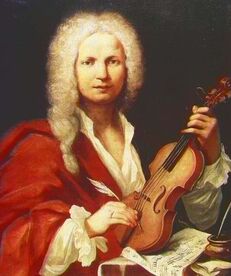 Image by Wikipedia Image by Wikipedia By the time of his death in the mid-18th century, Italian composer and priest Antonio Vivaldi had authored hundreds of pieces of church music, concerti, operas, and other compositions. Best known today as the composer of The Four Seasons series of concerti, he exemplified the Baroque sensibility. His music is filled with complex, bravura passages that highlight the solo capabilities of individual instruments. Vivaldi was also a teacher, working at several different schools of music over his career. When he was just 25 years old, he became master of violin with the Ospedale della Pietà, a Venetian school for orphaned children. While serving in this capacity over some 30 years, he managed to compose the bulk of his major creative works. At the Ospedale, the boys were taught skilled trades, and the girls learned music. Vivaldi’s leadership of the girls’ orchestra and chorus brought international fame to the school. The group performed at religious services and often at special events intended to make an impression upon powerful visitors. The girls performed, however, concealed behind a set of gratings, supposedly for the purpose of safeguarding their modesty. Antonio Salieri – Villainous or defamed?Thanks in part to Milos Forman’s movie Amadeus, the dominant image of Antonio Salieri is a jealous villain who helped to drive his rival Wolfgang Amadeus Mozart to an untimely death—or possibly poisoned him. But recent investigations have shown that there was likely far less substance to the feud between the two men. Newer biographies and recent performances and recordings of his music, including an album by Cecilia Bartoli, are beginning to show us that Salieri was a talented composer, with a personality that may have been cantankerous. Newer research also shows that he was viewed by contemporaries as a generally friendly, industrious, and occasionally even humorous man. Salieri’s creative output includes several operas in multiple languages, as well as chamber music and works for sacred occasions. Only six years Mozart’s senior, Salieri would live to the age of 74 and eventually see his powers as a composer dwindle, though he took on a roster of exceptionally gifted pupils. These included Ludwig van Beethoven, the German operatic composer Giacomo Meyerbeer, Franz Liszt, and Franz Schubert. Historians recount the story of how Salieri spotted the seven-year-old Schubert’s talent and began teaching him the basics of music theory. After Mozart’s death, Salieri even instructed Mozart’s young son. In 2015, a short composition created jointly by Mozart, Salieri, and a third composer was unearthed from the archives of the Czech Museum of Music. The following year, a harpsichordist in Prague gave the work its first public performance in 230 years. Nadia Boulanger – A “hidden figure” in music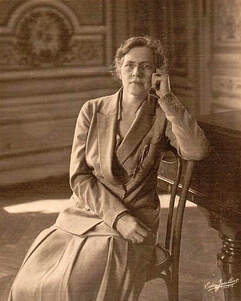 Image by Wikipedia Image by Wikipedia Nadia Boulanger earned international fame as a conductor and teacher of musical composition. Born in 1887, she was the daughter of Ernest Boulanger, a renowned voice teacher at the Paris Conservatory. She studied at the conservatory with composers Charles-Marie Widor and Gabriel Fauré, then began a career teaching both private lessons and classes. At age 21, she received a second place honor in the Prix de Rome competition for a cantata she had composed. Boulanger’s sister, who died young, was also a talented composer. In fact, after her sister’s death, Boulanger deemed her own work as a composer to be of no further use and stopped creating entirely. However, she continued to both promote her sister’s work and to teach others. By the early 1920s, she was working at the American Conservatory at Fontainebleau. Boulanger went on to become the first female conductor to work with the New York Philharmonic and other American orchestras. She taught in the Washington, DC area during the Second World War. In 1949, she earned the position of director of the American Conservatory. Boulanger’s first American student was Aaron Copland, and she later taught Virgil Thomson, Leonard Bernstein, Philip Glass, and a host of other noted composers. She lived to be 92 years old, but never in her long life wrote a textbook outlining her ideas on music theory. Rather, she exerted a strong and nurturing personal influence on her pupils. She worked to give them an in-depth understanding of the technicalities of music while enhancing their individual gifts of composition and expression. Zoltán Kodály – The centrality of the voiceZoltán Kodály, one of the best-known 20th century Hungarian composers, was also a scholar of the folk music of his country. Along with his contemporary Béla Bartók, he became one of the foremost collectors of traditional Hungarian songs. Kodály’s own creative compositions include the massive Psalmus Hungaricus, first performed in 1923 to celebrate the 50th anniversary of the joining of the cities Buda and Pest.
Kodály was also a contemporary of Boulanger and studied with Widor in Paris. He achieved renown for establishing the building blocks of what is today known as the Kodály Method, used by music teachers around the world. The Kodály Method works with the understanding that young children learn music best by doing, and that the body of traditional songs and dances of their own countries should form the core of their musical education, supplemented with the folk music of numerous other cultural traditions. Kodály’s system additionally puts great emphasis on the power and flexibility of the human voice as the first musical instrument. His method stresses singing as the best way to develop musical understanding and skill. Can the study of music, or a program of music therapy, help children struggling with emotional or behavioral disorders? A growing number of experts say it can. Emotional disorders in children and adolescents can have a number of negative or potentially dangerous consequences. These can include a chronic lack of academic success, aggression against peers, isolation from others, substance abuse, running away from home, and even violence against oneself or others. Children with emotional and behavioral disorders may have extremely limited functioning in one or more areas. This can prevent them from engaging in a healthy way with their families, schools, or communities. A comprehensive plan of general psychological or psychiatric therapy is likely to be the lynchpin of any successful program to treat these conditions. However, such a plan can be enhanced considerably by the incorporation of music. Music can help in a variety of ways.Music therapy can improve a child’s self-image, and can help him or her develop much-needed self-esteem and a clearer and stronger personal identity. For any child or teen who has experienced abuse, this type of therapy has the potential to promote positive new attitudes about themselves and their worth. Recent research has demonstrated the capacity of music therapy to help in several specific ways in working with children with emotional disorders. These involve the regulation of the child’s own emotions, developing communication skills, and addressing challenges with social functioning. Music therapy has proven extremely useful in decreasing children’s levels of anxiety and developing their ability to be emotionally responsive. Young people who have difficulty controlling their impulsivity have also been helped by music therapy. In fact, a carefully structured and appropriately repetitive series of experiences that engage multiple senses, presented within a context of acceptance and support, can be of immense value in a variety of clinical settings. Some research has even suggested that the use of music can even produce a sense of relaxation that leads to improved performance on a range of assessment metrics. Music fosters positive social interactions. The use of music in therapy provides young people with a topic of conversation. This makes it an excellent starting point for establishing comfort within a social group and for fostering healthy self-expression. Music can help a child experiencing social challenges to gain greater awareness of the presence and feelings of others. It can also facilitate greater levels of cooperation with peers and adults. Children who participate in music therapy have also shown a decreased level of disruptive incidents as reported in psychological studies. Music’s value as a social harmonizer in the general classroom becomes especially important when working with children with emotional and behavioral dysfunction. This is because it can help establish a positive atmosphere and encourage the development of cooperative skills. Experts point out that, once such a foundation is laid, it can be used to build a child’s social skills out still farther. Music teaches new skills and builds confidence.At least one researcher in this field has reported that a series of carefully-structured experiences with music, supported by targeted and easily understood reinforcement, enabled children labeled “delinquent” to gain a positive self-concept. In one study, a 12-year-old with significant behavioral issues who learned to play the piano gained constructive new communication skills, made measurably fewer negative statements about themselves, and showed notable motivation to continue learning music. Music improves verbal and nonverbal communication skills.Songwriting, or communicating through the lyrics of a song, can offer a non-threatening means of communication. For many children with emotional difficulties, speaking through lyrics makes self-expression much easier. Music also has an appeal beyond the realm of the verbal. This makes it an ideal tool for connecting with young people who may be hard to reach, who may themselves be non-verbal, or who may feel threatened by engaging in direct, one-to-one conversation. One perhaps underappreciated benefit of music therapy as a non-verbal means of communication is that it is nonthreatening. When listening to music, a child may feel they have a safe space in which to engage with emotional issues that might otherwise feel too complex or unsettling to confront. A skilled music therapy practitioner can even tailor-make a program to assist a child in coping with overwhelming emotions such as grief, anger, or trauma. Experts point out that for many young people with serious emotional issues, music can become both an outlet for expression as well as a core therapeutic component. For many children in this population, it serves as an effective way for them to establish communication channels with therapists, parents, teachers, and peers. Music has significant short-term gains.In a study based in Northern Ireland, a cohort of some 250 school-age children and teens exhibiting a range of emotional and behavioral challenges were divided into two groups. One received treatment via music therapy. The other received the current standard of care. More than half the total cohort had exhibited significant levels of anxiety.
The young people who participated in the music therapy program explored improvisation and music creation through singing, movement, and playing musical instruments. The therapist worked with the youth for half an hour at a time, for 12 weeks total. Through these sessions, the therapist was able to contextualize the experience and provide a supportive atmosphere with the ultimate goal of improving communication and social skills. The study showed that, in the short term, the group that received music therapy showed decreased levels of depression and increased feelings of self-esteem. Communication skills appeared unchanged. Longer follow-up studies showed that the improvement in other areas eventually dropped off. The conclusion: at least on a short-term basis, music therapy may be helpful for young people with a range of behavioral and emotional challenges. |
Photo used under Creative Commons from Marina K Caprara





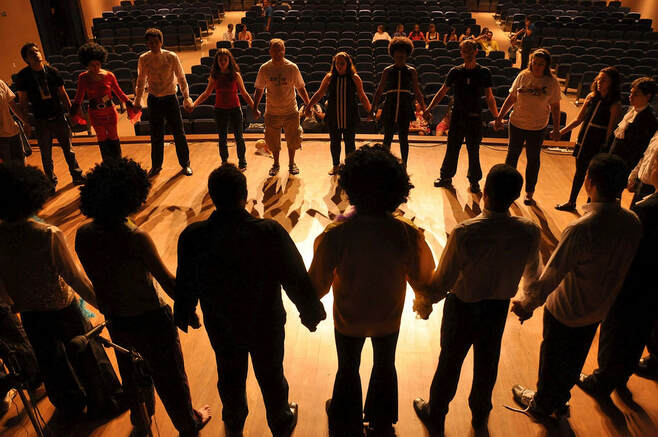
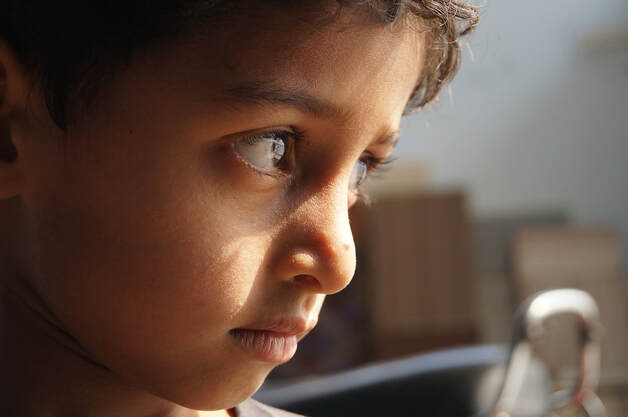
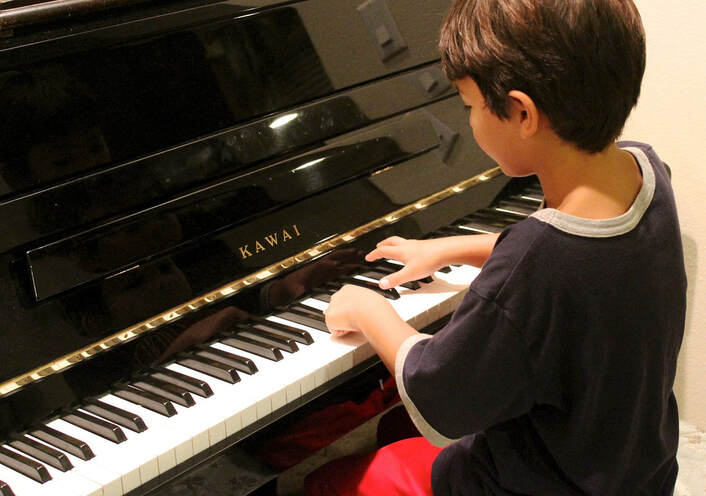
 RSS Feed
RSS Feed
